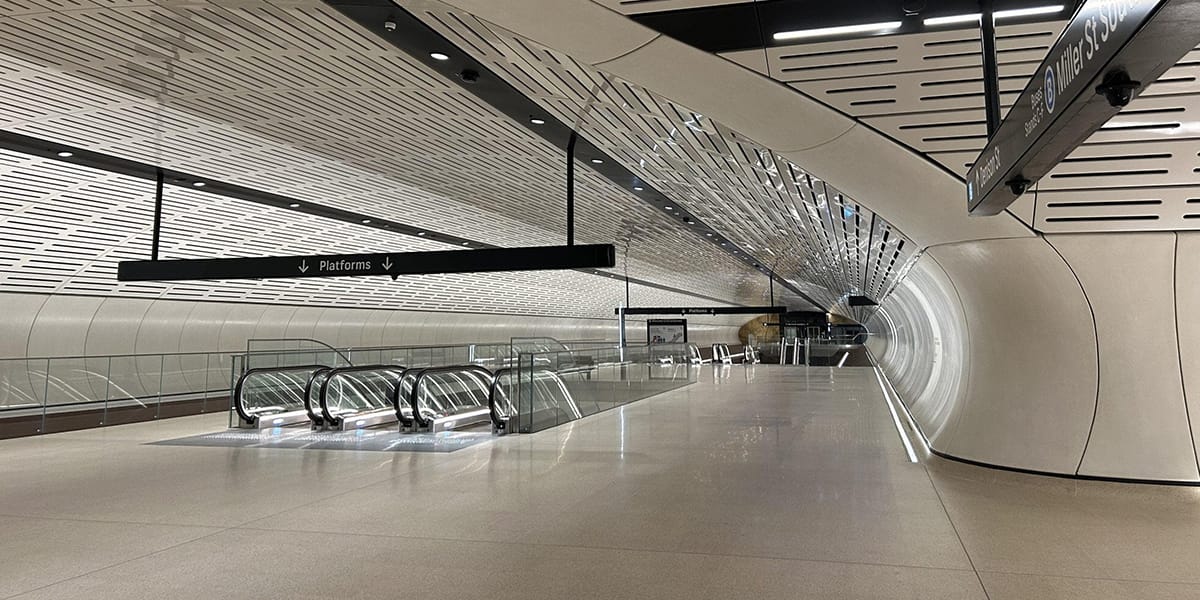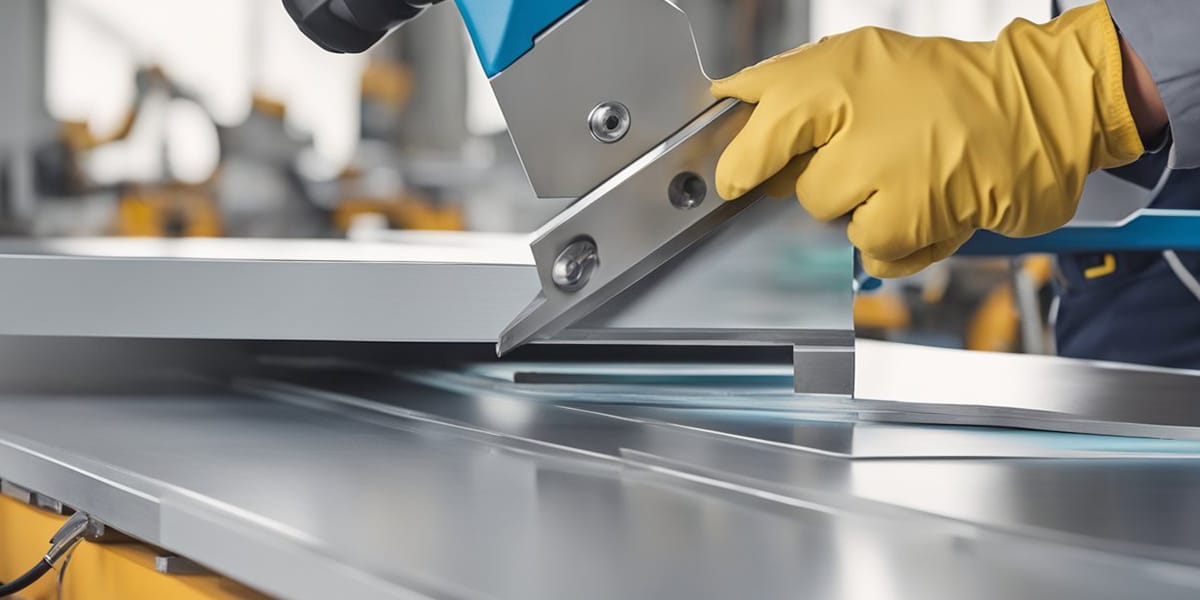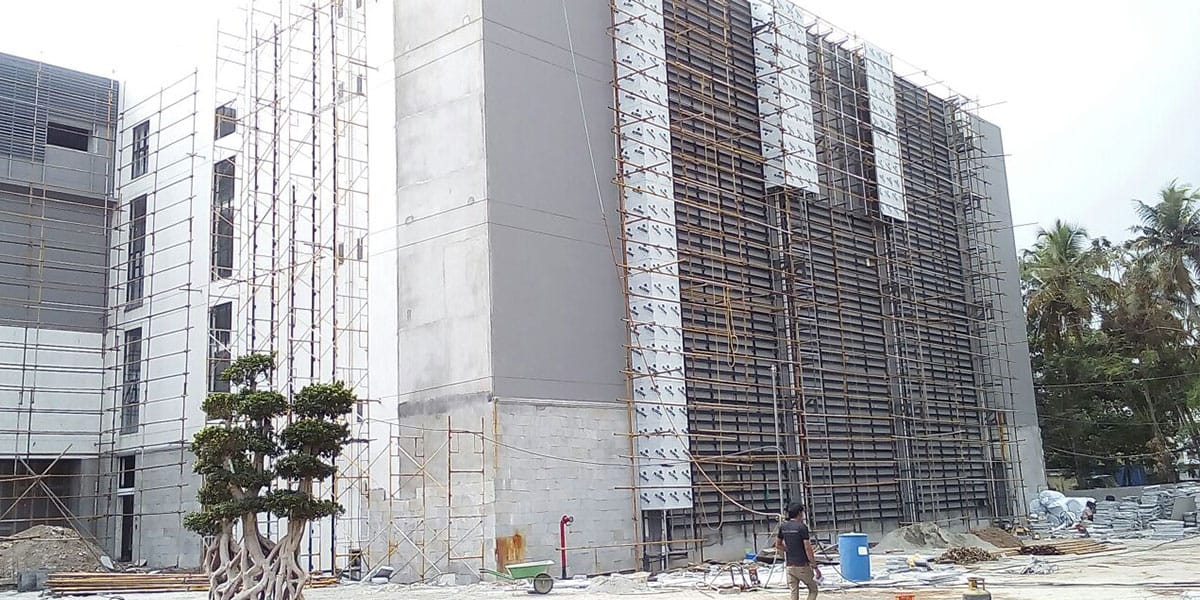
07 Mar Your Complete Guide to Interior Aluminum Composite Panel Installation
Table of Contents
You install interior aluminium composite panel systems by following clear steps. First, clean the surface well so the interior aluminium composite panels adhere better. Next, measure and plan carefully, then install the frame. Cut and mount each interior aluminium composite panel with precision. After that, seal the joints and perform regular maintenance. Safety is crucial at every stage. This acm panel installation guide is suitable for both DIYers and professionals. Recent data shows the global market for PVDF-coated panels was about $2.5 billion in 2023. Experts believe it will continue growing because these panels are durable and efficient.
Statistic / Insight | Description |
|---|---|
$5,436.7 million | |
Up to 40% less weight and faster installation | |
PVDF Coating Projected Market Size (2032) | USD 4.3 billion |
This guide provides the essential steps and process for installing interior aluminium composite panels the right way.
Key Takeaways
Clean and dry the surface well before you start. This helps the panels stick better and last longer. Measure the area carefully before you cut or put up panels. Planning the layout first helps you avoid mistakes and saves time. Use the correct tools and fire-resistant materials for safety. Install a strong frame that does not rust. Cut the panels to the right size. Fasten them tightly with screws so they stay in place. Seal all the joints and edges well. This keeps out water and helps save energy.
Things to Know Before Installing Aluminum Composite Panels
Surface Cleaning and Preparation
You must get the surface ready before you start. The surface should be clean, dry, and free of dust. This helps the panels stick well and last longer. Dust can be hard to remove because of special forces. These forces make dust cling to surfaces. If you leave dust, the panels may not stick right. Always take off grease, dust, and other things that could cause problems. Good manufacturers say to clean and prime the surface. This stops issues like peeling or delamination. ASTM D3359 testing shows cleaning and priming are important for strong sticking. If you skip this, paint might crack or panels could fall off later.
Tip: Wipe the surface with a soft cloth and gentle cleaner. Let it dry all the way before you keep going.
Site Assessment and Measurement
You need to measure carefully before cutting or installing panels. Good measurements help you plan and avoid mistakes. Walk around and look for bumps or things in the way. Mark where each interior aluminium composite panel will go. This helps you see if you need to change your plan or get more materials. Planning well makes the job look good and saves time and money.
Measure each wall or area for the panels.
Check your measurements again before cutting.
Plan so the panels fit well and look nice.
Knowing these things before installing aluminum composite panels helps you do a great job. When you get the surface ready and measure right, your aluminium composite panels will look good and stay in place for a long time.
Tools and Materials for Interior Aluminium Composite Panel
 Essential Tools
Essential Tools
You need the right tools to install acm panels well. Start with a measuring tape and a pencil to mark spots. Use a level to make sure lines are straight. Cut acp sheets with a circular saw or jigsaw. You also need a drill and screwdriver to mount the panels. Many people use a rubber mallet to tap panels in place. This helps avoid damage. Keep a utility knife close for trimming edges. These tools help you work faster and make fewer mistakes.
Tip: Put your tools in a toolbox. This saves time and helps you not lose things during acm panel installation.
Required Materials and Frame
Pick good acp sheets and frame materials for safe acm panel installation. Reports say fire-resistant and mineral-filled cores are common now. These help stop fires and meet safety rules. Some acp sheets come pre-coated and are ready to use. This makes aluminum panel installation easier and quicker. Use aluminum or galvanized steel for the frame. These do not rust and give strong support.
Material | Purpose | Certification/Standard |
|---|---|---|
ACP Sheets (Fire-rated) | Main surface | ASTM E 84, ISO 9001-2000 |
Aluminum/Steel Frame | Support structure | ASTM E 330, AAMA 508/509 |
Fasteners & Anchors | Secure panels to frame | Florida Product Approval #16406 |
Sealants | Seal joints and edges | ASTM E 96 |
Manufacturers with ISO 9001-2000 and good warranties are best. Pick acp sheets that meet ASTM and AAMA rules for safety and strength.
Safety Equipment
Safety is very important for every acm panel installation. Wear gloves, safety glasses, and a dust mask to stay safe. Use ear protection when you cut acp sheets. Wear fire-resistant clothes if you use power tools. Reports show fire-resistant gear and materials stop injuries and fire risks. Make sure your work area has fire extinguishers and clear exits. Follow local fire rules and use fire-resistant barriers if needed.
Note: Many building fires spread fast from non-fire-rated acp sheets. Always use certified fire-resistant materials and safety gear for every aluminum panel installation.
Planning and Layout for Aluminium Composite Panels
Layout Planning
You need to plan before you start aluminum panel installation. Good planning helps you not make mistakes or waste panels. First, look at your wall or ceiling. Draw the area on paper or use a computer tool. Mark where each panel should go. This helps you see how the panels fit and where you must cut.
Big projects, like offices and airports, use careful layout planning. For example, JetBlue Terminal at JFK Airport used Dibond panels for signs. The design team planned the panel layout to look good and work well. They mixed custom building with design needs. This made the job fast and nice to look at.
You can use these same steps. Measure two times before cutting. Plan for outlets, switches, or things in the way. Try to keep seams even and lines straight. This makes your aluminum panel installation look neat and last longer.
Tip: Put painter’s tape on the wall to show where panels go. This gives you a clear guide when you install the panels.
Dry Fitting Panels
Dry fitting is an important step in aluminum panel installation. You put each panel in its spot but do not attach it yet. This checks your measurements and layout before you finish. Many trade shows use this step. For example, one project used over 200 custom Dibond panels. They dry fit them first to make sure they fit under tight deadlines.
Dry fitting helps you find problems early. You can see if a panel needs to be cut or if the layout is wrong. This saves time and stops waste. It also lets you practice before using glue or screws.
Put all panels in order.
Look for gaps or panels that do not line up.
Fix things before you finish the job.
By using these steps, your aluminum panel installation will go better and faster. Good planning and dry fitting are very important steps in the process.
Aluminum Composite Panel Installation Steps
 Frame or Subframe Installation
Frame or Subframe Installation
You begin by making a strong frame for your panels. This frame gives support and keeps the panels straight. Use aluminum or galvanized steel for the frame. These materials do not rust and hold the interior aluminium composite panel well.
Here are the steps for putting up the frame: 1. Mark the wall or ceiling where the frame will go. 2. Use a level to make sure your lines are straight. 3. Attach the frame with screws or anchors. 4. Check that the frame is even and tight before you move on.
Many experts say to make a grid with male and female profiles. This grid helps you line up each panel and keeps spaces even. Make sure the surface is dry and clean before you start. A dry, clean surface helps the frame stick and last longer. Some projects use an Air Vapour Barrier (AVB) rainscreen system for extra protection. Overlap the AVB sheets and smooth out any wrinkles. This stops water from getting behind your panels.
Tip: Always wear gloves and goggles when working with metal frames. They protect you from sharp edges.
Cutting and Shaping Panels
Next, you need to cut and shape your acp sheets to fit your space. This part of the acm panel installation guide needs careful measuring and the right tools. Use a measuring tape to mark where you will cut. Double-check your marks before you start.
There are different ways to cut panels: – Shearing is good for straight cuts on thin panels. – Band saws help you cut curves or thick panels. – Snip cutting works for small changes.
Pick your cutting method based on how thick and what type your panels are. Some projects use CNC routers for special shapes and grooves. Press machines can bend panels for corners or special looks. Always follow safety rules when you cut. Wear a dust mask and ear plugs to stay safe.
Cutting and shaping panels the right way helps you waste less and get a neat finish. Guides say the best cutting method depends on your budget, how many panels you have, and the look you want. Good cutting and shaping make the next steps easier.
Mounting and Fastening Panels
Now you can put the aluminum panels onto the frame. This step is very important in the acm panel installation procedure. Start by dry fitting each interior aluminium composite panel to check the fit. Make changes if needed before you attach them for good.
Use screws like hex head self-drilling screws with bonded washers. These screws match the color and finish of your panels. They hold the panels tight and help them stand up to wind. Put the screws at the edges and in the middle of each panel for even support. Some projects use nuts and rivets for extra strength.
Before you finish mounting aluminum panels, check that the frame is still straight and tight. Make sure all panels line up with the grid. Manufacturer rules say to use screws that meet local building codes and can handle wind. Always check the surface and support before you start this step.
Note: Using screws is better than glue for long-lasting panels. It also makes fixing panels easier later.
Sealing Joints and Edges
The last step in the acm panel installation procedure is sealing and weatherproofing. You need to seal all joints and edges to keep out water, dust, and air. This step protects your panels and the building behind them.
Here are the steps for sealing and weatherproofing: 1. Clean the joints and edges before you put on sealant. 2. Use a one-part silicone-based sealant for places you can see. 3. For hidden joints, use non-curing butyl or polyisobutylene tape. 4. Put the sealant in a smooth, even line. Press it into the gap for a tight seal. 5. Add top caps or trim pieces to cover gaps and give extra protection.
Case studies show that good sealing and weatherproofing can save energy and stop leaks. Projects that use weather stripping and screws get better air seals and lower energy bills. Always test your seals with drip or pressure tests to make sure they work.
Callout: Bad sealing can cause water damage and higher energy bills. Take your time with this step for the best results.
By following these aluminum composite panel installation steps, you make a strong, weatherproof, and neat finish. The acm panel installation guide helps you avoid mistakes and makes sure your panels last for years. Each step, from frame installation to sealing, builds on the last. Use the right tools and methods for every step.
Finishing and Maintenance
 Inspection and Quality Check
Inspection and Quality Check
When you finish acm panel installation, check your work. Inspections help you spot problems early. This keeps your panels looking nice. Look at the surface for dents, scratches, or color changes. Make sure all joints and edges are sealed tight. Check that fasteners are tight and panels are straight. Use a level to see if everything lines up. Some experts use special tools to find hidden problems. These tools include ultrasonic testers and thermography. Keep records of your inspections and repairs. This helps you remember what you fixed and plan future maintenance.
Check your panels at 1, 3, and 5 years. This helps you find sealant problems or loose panels before they get worse.
Cleaning and Care
Cleaning your panels keeps them looking good and strong. Use mild soap and soft brushes to clean off dust and dirt. Do not use harsh chemicals or rough pads. These can scratch or damage the finish. Clean joints and drainage channels to stop water from building up. If you see small scratches or dents, fix them with repair kits. For bigger problems, you may need to replace a panel. Always follow the manufacturer’s cleaning instructions for your acm panel installation.
Use soft cloths or sponges for daily cleaning.
Check the coating and sealants once a year.
Add more protective coating if you see fading or wear.
Tip: If you live near the coast or in a polluted area, clean your panels more often to stop corrosion.
Maintenance Tips
Good maintenance keeps your acm panel installation safe and strong. Make a schedule for inspections and cleaning. Most experts say to check your panels every six months. Look for loose fasteners, cracked sealants, or panels that are not straight. Test weatherproofing by spraying water on the joints. Check for leaks. Replace any sealant that is dry or cracked. Make sure drainage systems work well to stop water damage. Write down all your maintenance work.
Task | Frequency | What to Check |
|---|---|---|
Inspection | Every 6 months | Fasteners, joints, alignment |
Cleaning | Every 3-6 months | Surface, joints, drainage |
Weatherproofing Test | Annually | Seals, leaks, water runoff |
As needed | Cracks, hardening |
Remember: Good weatherproofing and regular care protect your panels and help them last longer.
You can get a great look with interior aluminum composite panels if you follow each step in this guide. Getting ready, measuring right, and checking for safety help you not make mistakes. The table below explains why many people pick these panels for their jobs:
Benefit Category | Evidence Summary |
|---|---|
Insulation Performance | Makes buildings use less energy and feel more comfortable. |
Waterproofing & Sealing | Keeps out water, even when it is very hot or cold. |
Environmental Impact | Can be recycled easily, so there is less trash and pollution. |
Cost Efficiency | Saves money and makes the job go faster. |
Installation Benefits | These panels are light, so they are easier and safer to put up. |
Fire Resistance | Follows tough fire safety rules. |
Comparative Analysis | Better for the planet and easier to care for than PVC or wood. |
Use this guide every time for the best outcome.
If your project is hard, ask a professional for help to keep things safe and strong.
FAQ
How do you cut aluminum composite panels safely?
You should use a circular saw or jigsaw with a fine-tooth blade. Wear safety glasses and gloves. Mark your cut line with a pencil. Cut slowly to avoid chipping the panel. Always keep your hands away from the blade.
Can you install aluminum composite panels on any wall?
You can install panels on most flat, dry, and clean walls. Make sure the surface is strong and free of dust. Avoid walls with moisture problems. If you see damage, repair it before you start your project.
What is the best way to clean aluminum composite panels?
Use a soft cloth or sponge with mild soap and water. Rinse with clean water. Do not use harsh chemicals or rough pads. These can scratch or damage the surface. Clean panels regularly to keep them looking new.
Do you need special tools for aluminum composite panel installation?
You need basic tools like a measuring tape, level, drill, and saw. For best results, use a circular saw with a fine blade. Some projects may need a rubber mallet or utility knife. Always check the manufacturer’s instructions.
How long do aluminum composite panels last indoors?
Aluminum composite panels can last over 20 years indoors. You must clean and inspect them regularly. Good maintenance helps prevent damage. Panels with quality coatings resist fading and scratches. Always follow care tips for the longest life.



 Essential Tools
Essential Tools Frame or Subframe Installation
Frame or Subframe Installation Inspection and Quality Check
Inspection and Quality Check